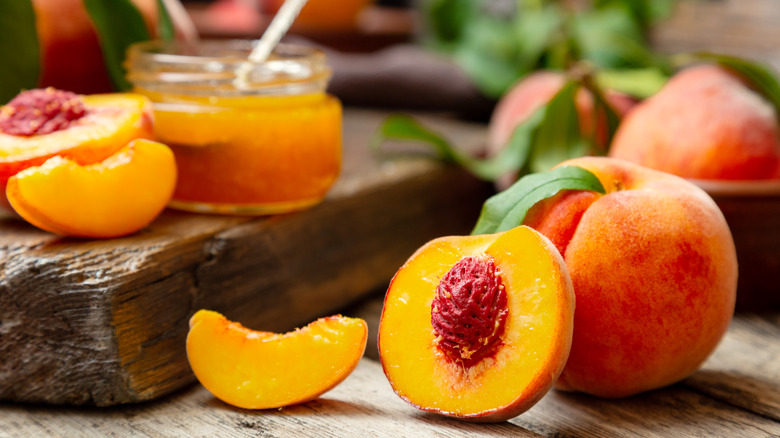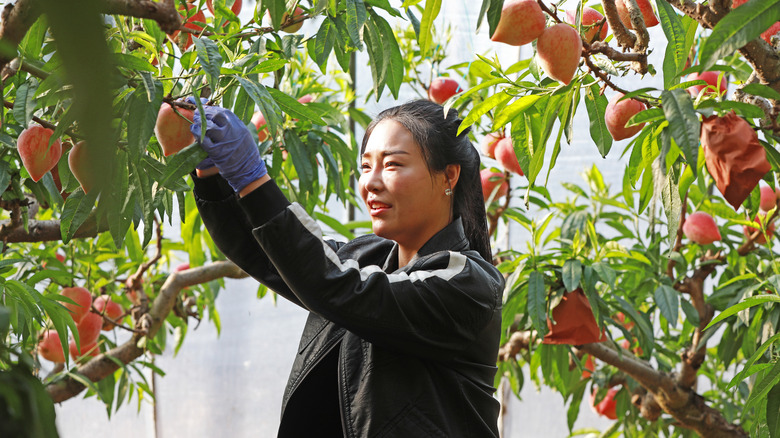This Country Produces The Most Peaches Worldwide
Fruit lovers across the globe embrace fresh peaches for the sweet, juicy, tangy flavor, landing it amongst the top 10 most popular fruits in the world, according to The Science Agriculture. With that kind of crop-cred, it's no surprise that deciduous peach trees populate vast farm acres across the globe, producing multimillion tons of the stone fruit every year.
Botanically known as Prunus persica, the peach's plant name is a nod to a proliferation period in Persia, which is modern-day Iran, notes Market Publishers. But that doesn't mean that peaches are indigenous to that region. The home base for peaches is actually Northwest China in an area resting between the Kunlun Mountain slopes and the Tarim Basin (per Market Publishers).They took quite a journey from there, ultimately planting firm roots in dozens of countries now cultivating, consuming, and exporting the aromatic, velvety-skinned round fruits.
So, which of these countries now produces the most peaches worldwide? Depending on weather patterns, geopolitical concerns, and labor and supply chains, it can vary from year to year. But one place unfailingly tops the list.
Top peach producing countries
First, let's establish that peaches and nectarines are the same species of fruit even though modern commercial marketing efforts make a distinction between them, explains World Atlas. You'll often see the two stone fruits grouped together on production and statistic studies, including on a factsheet dated September 2021 from the United States Department of Agriculture (USDA).
Regardless of whether nectarines are thrown in the mix, there's really no contest for which country produces the largest number of peaches in the world: China. The specific number and crop predictions vary annually, but peach and nectarine production in China ranged from 14 million metric tons in 2017, per World Atlas, to a USDA estimate of 16 million tons in the 2021/22 growing season.
Overall, China accounts for a considerable percentage of the total USDA-projected 2021/22 global peach and nectarine output of 21.8 million tons. The European Unions comes in second with a combined-country estimate of 2.7 million tons spread between Spain, Italy, Greece, and France, despite issues with frost, rain, and reduced planting due to over-supply. Finally, the United States shows a healthy increase to 716,000 tons in 2020/21, per a survey by National Agricultural Statistics Service (NAAS) referenced in the USDA's factsheet.
Statistics aside, that's a whole lot of peaches. Wherever they originate, the parade of yellow, red, and orange blushing beauties marches across the globe to eagerly await in markets and on dinner tables every single summer.

